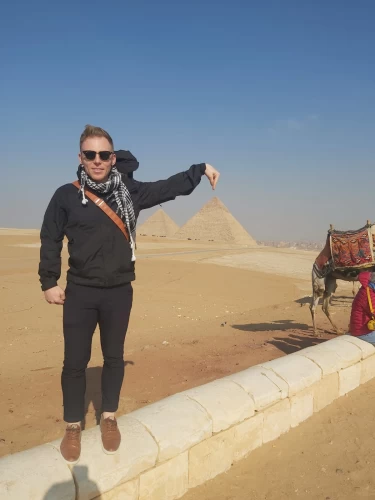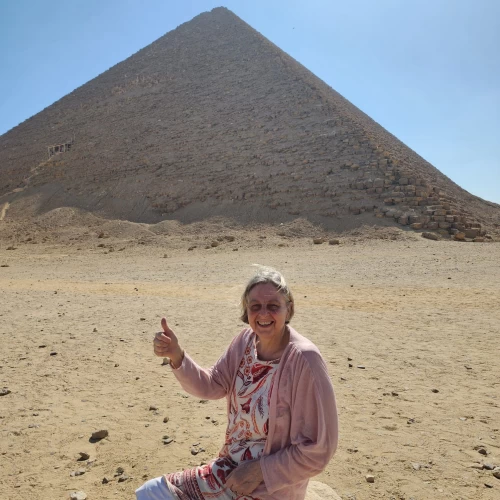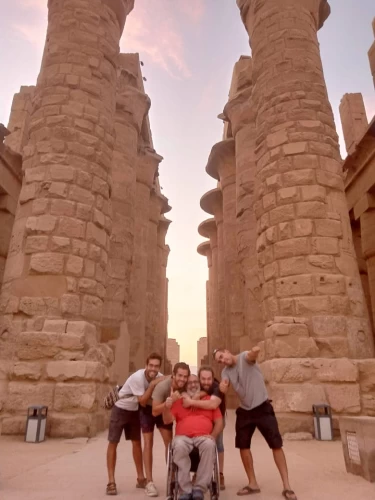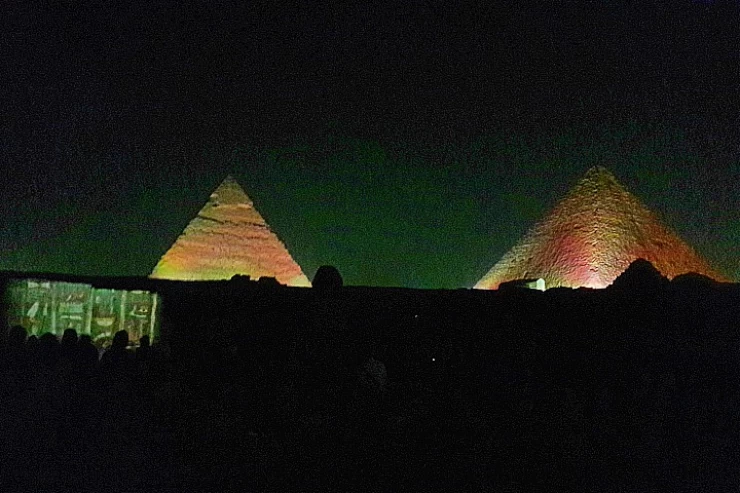
Storia dell'Egitto | Cronologia della storia dell'Egitto
Storia dell'Egitto
Grazie all'inondazione del fiume Nilo e alle sue fertili rive e delta, nonché alle realizzazioni e all'impatto del popolo indigeno dell'Egitto, la storia dell'Egitto è ricca di grandi eventi e di grandi eventi archeologici.
Cronologia della storia dell'Egitto
La maggior parte della storia antica dell'Egitto rimase un mistero fino alla scoperta della Stele di Rosetta che aiutò a decodificare i segreti degli antichi geroglifici egiziani. La Grande Piramide di Giza è una delle Sette Meraviglie del Mondo Antico, e la Biblioteca di Alessandria è stata l'unica del suo genere per secoli.
L'Egitto ha una grande storia che la rende una delle più grandi civiltà dall'antica civiltà del mondo, la storia dell'Egitto si è divisa in storia antica, la storia copta inclusa l'epoca romana e la storia islamica fino all'ottomano e la nuova storia egiziana che inizia con Mohmed Ali aveva conosciuto che ogni paese ha avuto alti e bassi, l'Egitto ne ha molti
La fondazione umana in Egitto risale almeno al 6000 a.C. durante la valle del fiume Nilo fu abitata per la prima volta. L'antica civiltà egizia si unì intorno al 3150 a.C. con l'unificazione politica dell'Alto e del Basso Egitto sotto il primo faraone della prima dinastia, Narmer. Il dominio egiziano originale continuò per la maggior parte fino alla conquista dell'Impero achemenide nel VI secolo a.C.
Preistoria (pre-3100 a.C.) Ci sono dati da petroglifi lungo le terrazze del Nilo e nelle oasi del deserto. Nel 10 a.C., una cultura di cacciatori-raccoglitori e pescatori fu rinnovata da una cultura di macinazione del grano. I cambiamenti climatici e / o il pascolo eccessivo vicino al 6000 aC iniziarono a seccare le terre pastorali dell'Egitto, formando il Sahara. I primi popoli tribali migrarono verso il fiume Nilo, dove formarono un'economia agricola stabile e una comunità più centralizzata.
Intorno al 6000 a.C., una cultura neolitica era radicata nella Valle del Nilo. Durante il neolitico, diverse culture predinastiche si svilupparono indipendentemente nell'Alto e nel Basso Egitto. La cultura Badari e la serie successore Naqada sono generalmente considerate come precursori dell'Egitto dinastico. Il primo sito dell'Egitto inferiore conosciuto, Merimda, precede il Badarian di circa settecento anni. Le comunità contemporanee della Bassa Egizia convissero con le loro controparti meridionali per più di duemila anni, rimanendo culturalmente distinte, ma mantenendo frequenti contatti attraverso il commercio. Le prime prove conosciute di iscrizioni geroglifiche egiziane apparvero durante il periodo predinastico su vasi di ceramica Naqada III, datate al 3200 a.C. circa.
Antico Egitto (3100-332 a.C.) Un regno unificato fu fondato nel 3150 a.C. dal re Menes, che portò a una serie di dinastie che governarono l'Egitto per i successivi tre millenni. La cultura egiziana fiorì durante questo lungo periodo e rimase tipicamente egiziana nella sua religione, arte, lingua e costumi. Le prime due dinastie dominanti dell'Egitto unificato prepararono il terreno per il periodo dell'Antico Regno (2700–2200 aC circa), che costruì molte piramidi, in particolare la piramide di Djoser della Terza Dinastia e le Piramidi di Giza della Quarta Dinastia.
Il primo periodo intermedio è iniziato in un periodo di turbolenze politiche quasi 150 anni fa. La stabilità del governo ripristinò la prosperità del paese nel Medio Regno nel 2040 a.C. e raggiunse il suo culmine durante il regno del faraone Amenemhat III. E con l'entrata nel secondo periodo di separazione, con l'arrivo della prima dinastia straniera in Egitto, il regno semitico di Hexus. Gli invasori Hyksos occuparono la maggior parte del Basso Egitto intorno al 1650 a.C. e crearono una nuova capitale ad Alvarez. Furono espulsi dalla Forza dell'Alto Egitto guidata da Ahmose I, che fondò la diciottesima dinastia e trasferì la capitale da Menfi a Tebe.
Un esperto di Cairo Top Tours, specializzato in egittologia e in grado di parlare la vostra lingua, vi assisterà ovunque sia necessario.
Lo stato moderno (circa 1550-1070 a.C.) iniziò con la diciottesima dinastia, indicando l'ascesa dell'Egitto come potenza mondiale che si espanse durante la sua più grande estensione a un impero fino a Tombus in Nubia, e incluse parti del Levante nel est. Questo periodo è stato indicato per alcuni dei faraoni più famosi, tra cui Hatshepsut, Tuthmosis III, Akhenaton e sua moglie Nefertiti, Tutankhamon e Ramesse II. La prima espressione storicamente acclamata del monoteismo arrivò durante questo periodo come atenismo, sebbene alcuni considerino l'atenismo una forma di monoteismo piuttosto che un monoteismo. I contatti ripetuti con altri paesi hanno portato nuove idee nel nuovo regno. Il paese fu successivamente invaso e occupato da libici, libici e assiri, ma alla fine gli indigeni egiziani li cacciarono e ripresero il controllo del loro paese.
Il nostro team vi aiuterà a viaggiare in Egitto e sperimentare il tempo soleggiato del nostro bel paese durante la Pasqua 2022, grazie alla loro vasta conoscenza del turismo egiziano. Puoi personalizzare il tuo pacchetto selezionando uno dei nostri pacchetti di viaggio in Egitto o sfruttare al massimo il tuo tempo in una breve visita, imparando di più sulla storia egiziana e le sue affascinanti storie e vivendola attraverso tour privati al Cairo. Partecipa a uno dei nostri tour economici in Egitto attraverso il deserto del Sahara, come i tour di Siwa dal Cairo, per esempio, o preferibilmente i tour nel Deserto Bianco d'Egitto. Scoprite i nostri tour di un giorno ad Assuan, fate una gita di un giorno da Assuan ad Abu Simbel, o viaggiate via terra e godetevi i nostri tour di un giorno a Luxor per vedere gli incredibili templi di Karnak, il Tempio di Luxor, il Tempio di Hatshepsut, e vedete le meravigliose tombe splendidamente dipinte nella Valle dei Re, questo è il luogo dove i re e i governanti del nuovo regno riposano in pace e imparate i loro riti di mummificazione e sepoltura.
La storia dell'antico Egitto si estende dai primi insediamenti preistorici della Valle del Nilo settentrionale alla conquista romana del 30 a.C.. La storia dell'epoca faraonica risale al 3200 a.C. circa, quando l'Alto e il Basso Egitto divennero uno stato coerente fino a quando il Paese cadde sotto il dominio greco nel 332 a.C..
Un esperto di Cairo Top Tours, specializzato in egittologia e in grado di parlare la vostra lingua, vi assisterà ovunque sia necessario.
The ancient history that can be perceived from the Pharaohs has to be one of the greatest historical civilizations ever. Its events’ timeline is well over five thousand years, and many aspects of the world, such as art, architecture, culture, and even religion, have their bases in Egypt. The records of the land of Egypt are interesting in that they contain histories of empires that were built and then perished, histories of great kings and queens, and outstanding places and structures that even today, in modern societies, can only marvel at. Egypt’s history is undoubtedly dominated by a vibrant narrative of struggle, hope, and ingenuity of the people portrayed, from the making of the pyramids to the currents of the Nile.
The Ancient Kingdoms of Egypt (c. 3100 BC–332 BC)
1. Pre-Dynastic Period (Before 3100 BC)
The elements of history written of Egypt are dated around 3100 BC, but if one avails of its importance in terms of history, it dates back even to the pre-dynastic era, when there was the emergence of small agricultural settlements along the Nile. By this time, the early residents of Egypt were busy establishing forms of agriculture as well as animal husbandry, pottery making, and the making of crude tools. These settlements served as the foundation of the elaborate systems of culture and society that were to come.
2. The Unification and Early Dynastic Period (c. 3100–2686 BC)
King Narmer, often referred to as Menes was responsible for the unification of Upper and Lower Egypt, which signified the onset of ancient Egyptian civilization. He is considered to be the first pharaoh of Egypt and founded the nation’s first dynasty. This unifying act was essential since it created the nucleus around which the centralized monarchy of Egypt, which was the prevailing system of government for almost three thousand years, would revolve.
Towards the tail end of the Early Dynastic, the very first steps in the construction of monumental architecture began, and hieroglyphs were mastered. It was in this period that the rulers were expected to fulfill the role of the king and also that of a god. This idea existed for many years and was a fundamental one in Egypt.
3. The Old Kingdom (c. 2686–2181 BC)
The divine rulers, who were the Pharaohs in the earthly realm, tamed every resource and manpower to erect huge structures such as the Great Pyramid of Khufu and the Sphinx.
The Old Kingdom period displayed a clear and consistent administrative hierarchy and even a large-scale institutional support system that controlled the resources, agricultural production, and the temples of the state. However, in the latter years of this era, the dominant position of the central authority began to diminish, ushering in an era of chaos and fragmentation.
4. The Middle Kingdom (c. 2055–1650 BC)
Following the tumultuous First Intermediate Period referred to, Egypt returned to political stability and strong rulers in its Middle Kingdom. There is a revival in this period in the fields of art, literature, and monumental building works. Pharaohs such as Mentuhotep 11 and Senusret 111 were responsible for extending Egypt’s boundaries southward into Nubia as well as promoting relations with other countries through trade.
The Middle Kingdom is usually regarded as the classical period of ancient Egypt, filled with relative calm and wealth. The authorities emphasized the development of construction and the growth of the economy of Egypt. In spite of such achievements, the internal conflicts and external challenges finally caused the disintegration of the Middle Kingdom, making way for another period of darkness and despair.
5. The New Kingdom (c. 1550–1070 BC)
The new kingdom constitutes, also from a chronological point of view, the culminating era of ancient Egyptian civilization. It was during this period that Egypt was transformed into a full-fledged empire under rulers such as Thutmose III, Hatusu, and Rameses II, who through wars and conquests, or rather political strategies, expanded Egypt's borders. He also added great temples during this period, such as those at Karnak, Luxor, and Abu Simbel, many of which still exist today.
Il nuovo regno era un’epoca che riformò anche la religione in notevoli modi, come il periodo di regno del faraone Akhenaten, which introduced a period of continuous fight in worshipping a single god—Aten, the disk of the sun. His was, however, an unpopular and a very brief rule, for there were leaders after him who brought back the old ways of worship in Egypt, which was worshiping none but many gods.
But then, power aside, Egypt was not immune to the laws of history. By the close of the New Kingdom, this state institution in question was already wobbly, and there was a gradual abatement of its activities.
1. The Ptolemaic Dynasty (332–30 BC)
For many centuries, the old state of Egypt thrived free until that point in time, which altered when the rule of Alexander the Great started in the year 332 BC. It was also during those years that Alexandria became the center of Greek civilization and education, with the noted Library of Alexandria and the Lighthouse, which is now one of the Seven Wonders of the Ancient World.
Until the end of the dynasty, the traditions of Egypt were largely maintained, even though the rulers were Hellenistic kings. The last ruler of this dynasty, Cleopatra VII, was known to have opposed the domination of Rome by trying to establish relations with Julius Caesar and Mark Antony. However, after her loss at the Battle of Actium in 31 BC, Egypt fell into the Roman Empire.
Under the control of the Romans, Egypt was considered one of the most valuable provinces of the empire, primarily because it was rich and produced plenty of crops, particularly grains. The Romans maintained several of the practices of the Ptolemaic kings; however, Egypt was administered as a colony of the empire. The establishment of Christianity in Egypt started during the Roman times, and it was in the 4th century A.D. that Egypt began to develop into a significant early center of Christianity.
The phase change from the Roman to the Byzantine Empire that occurred in 395 AD marked the slow deterioration of Egypt’s economic well-being, but Egypt was still geographically and religiously active. It was also in this time period that the popular Coptic Church was born, which incorporated aspects of Christianity with ancient Egyptian beliefs.
The Egyptian territories fell to the Army of Islam in the year 642 AD. This marked the commencement of the Islamic Era in Egypt. As Cairo, a city created by the Fatimids in 969 AD, grew prominent, it was clear that Egypt was going to become one of the most pivotal countries in the Islamic world. After most of the Egyptian lands were conquered, Egypt witnessed great prosperity in learning, trade, and the arts.
The Fatimids, Ayyubids, and Mamluks
The capital of Egypt was established, and the famous Al-Azhar University was built during the reign of the Fatimid Dynasty which ruled over Egypt. With the waning of the Fatimid era, Egypt was captured for a brief period by the fact that Saladin, protector of the territories, including Egypt himself, later founded the Ayyubid dynasty, whose main task was fighting against the Crusaders.
Later came the Mamluks, who were a military caste and who ruled over Egypt for several eras. They built a number of the most beautiful structures in the city, including mosques, schools, and fortifications, in the Mamluk period. Egypt was, at least at the stage when it was defeated, a rather big country with advanced development before it was conquered by the Ottoman Empire.
Egypt in the Modern Era (1517–Present)
1. Ottoman and British Rule
With the Ottoman Empire's conquest in 1517, Egypt was annexed as part of the empire for nearly four hundred years and had remained so bound. That is primarily due to its geopolitical possibilities; it was invaded several times by European powers, and in 1798 Napoleon Bonaparte managed to invade Egypt for a short period. After the French lost in this region, Egypt was ruled by Muhammad Ali Pasha, who was on modern Egypt’s compass. He reformed agriculture, industry, and the military; these transformations served as the waking up of the modern state of Egypt.
In the late nineteenth century, Egypt acquired the status of a British protectorate, which lasted until ’52, the year Egypt resumed control after a revolution led by Gamal Abdel Nasser. It was Nasser who became one of the most powerful figures within the Arab sphere of influence, propagating pan-Arabism and earlier nationalizing the Suez Canal in 1956.


















